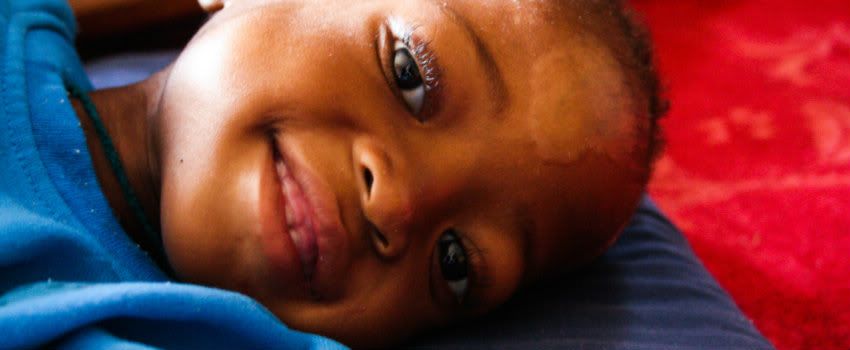Below is a guest post from Georgetown medical student Adam Knudson, who visited Mokhotlong for several weeks in April. Adam is studying internal medicine and joined the Outreach staff on site visits as well as volunteered at the Mokhotlong Government Hospital, where he observed many effects of the HIV/AIDS pandemic firsthand.
 The Ntate shuffled
into the outpatient clinic with the gait of a weathered octogenarian. From his physical appearance, I would have
guessed him to be in his mid-fifties, but the birthdate on his Bukana said he was thirty-five. His stick-like arms and legs poked out from
underneath his many layers of clothes and traditional Basotho blankets. With
sunken cheeks, sunken eyes, and sunken temples, every contour of his skull was
visible on his gaunt face, which was now little more than skin draped loosely over
bone. Every rib was visible in his
birdcage chest, and the concavity of his abdomen made me question how any
internal organs could possibly fit inside.
The Ntate shuffled
into the outpatient clinic with the gait of a weathered octogenarian. From his physical appearance, I would have
guessed him to be in his mid-fifties, but the birthdate on his Bukana said he was thirty-five. His stick-like arms and legs poked out from
underneath his many layers of clothes and traditional Basotho blankets. With
sunken cheeks, sunken eyes, and sunken temples, every contour of his skull was
visible on his gaunt face, which was now little more than skin draped loosely over
bone. Every rib was visible in his
birdcage chest, and the concavity of his abdomen made me question how any
internal organs could possibly fit inside.
The Ntate’s belt
measured his dramatic weight loss. A
worn hole in his belt from when he weighed his heaviest was now eight holes
away from where the belt was currently buckled. Still worse, having the belt buckled as tightly as possible in self-made
notches wasn’t enough to prevent Ntate’s pants
from falling off his hip bones. He
tucked his thick wool sweater into his tightly secured jeans in order to hold them
up.
Like several patients I encountered at Mokhotlong Government
Hospital during my month as a TTL medical volunteer, Ntate was suffering from AIDS wasting syndrome. While AIDS wasting syndrome is typically only
seen in end-of-life scenarios in the US, sadly, it is not an uncommon way for
adult patients to present here when they are first diagnosed with HIV/AIDS. In Lesotho, the HIV prevalence rate is an
astounding 23.1%, second highest in the world according to World Health
Organization data from 2012. Thanks to
the efforts of Touching Tiny Lives, Baylor International Pediatric AIDS
Initiative, Elizabeth Glaser Pediatric AIDS Foundation, the Millennium
Challenge Corporation, and other global health initiatives, Lesotho’s HIV
prevalence rate is actually down from nearly 30% a decade ago.
Despite the progress, many challenges remain. Limited resources create hurdles. Mokhotlong Government Hospital, which acts as
a referral center for clinics in all of Mokhotlong District, has been without a
functioning CD4 count machine for the better part of the past six months. It’s awfully difficult to appropriately treat
HIV/AIDS patients without knowing whether their current treatment regimens are
effective. Instead of using CD4 cell
counts to stay ahead of the disease process, healthcare workers here are forced
to resort to monitoring physical signs and symptoms and play catch-up when the
disease gets out of hand. The few
patients with the economic means to travel are told to go to hospitals in other
districts to get their CD4 counts checked.
Social and cultural factors also pose barriers to preventative measures. Some of these issues are highlighted by the wide gender disparity in HIV testing rates. According to old UNAIDS data from 2009, 68.8% of females in the country had been tested for HIV at some point in their life, compared with only 39.3% for males. From my brief time in Lesotho, it seems that gender disparity hasn’t changed much. Female empowerment campaigns and Preventing Mother-to-Child Transmission (PMTCT) efforts likely contribute to the higher female testing rate relative to males. So too, I suspect, does a culture of male denial. Reading through a TTL baby’s intake packet and noticing that the baby’s mother was HIV-positive while the father’s status was “unknown and refused testing” was one of the more frustrating moments during my month at TTL. The silver lining was an HIV-negative baby, one of many PMTCT success stories.
Social and cultural factors also pose barriers to preventative measures. Some of these issues are highlighted by the wide gender disparity in HIV testing rates. According to old UNAIDS data from 2009, 68.8% of females in the country had been tested for HIV at some point in their life, compared with only 39.3% for males. From my brief time in Lesotho, it seems that gender disparity hasn’t changed much. Female empowerment campaigns and Preventing Mother-to-Child Transmission (PMTCT) efforts likely contribute to the higher female testing rate relative to males. So too, I suspect, does a culture of male denial. Reading through a TTL baby’s intake packet and noticing that the baby’s mother was HIV-positive while the father’s status was “unknown and refused testing” was one of the more frustrating moments during my month at TTL. The silver lining was an HIV-negative baby, one of many PMTCT success stories.
As a soon-to-be resident in internal medicine, I am thankful
for my opportunity to spend a month in Lesotho with TTL and Mokhotolong
Government Hospital. My experiences here
have been eye-opening, and my time in Mokhotlong allows me now to put faces to
the phrases “in resource-poor countries…” and “in Sub-Saharan Africa…” from
medical literature and medical school lectures. I leave Lesotho with a re-affirmed passion for global health. Despite the challenges and frustrations, I am
optimistic that the successes and progress in Lesotho will continue, and I hope
to contribute to that progress in the future.


No comments:
Post a Comment